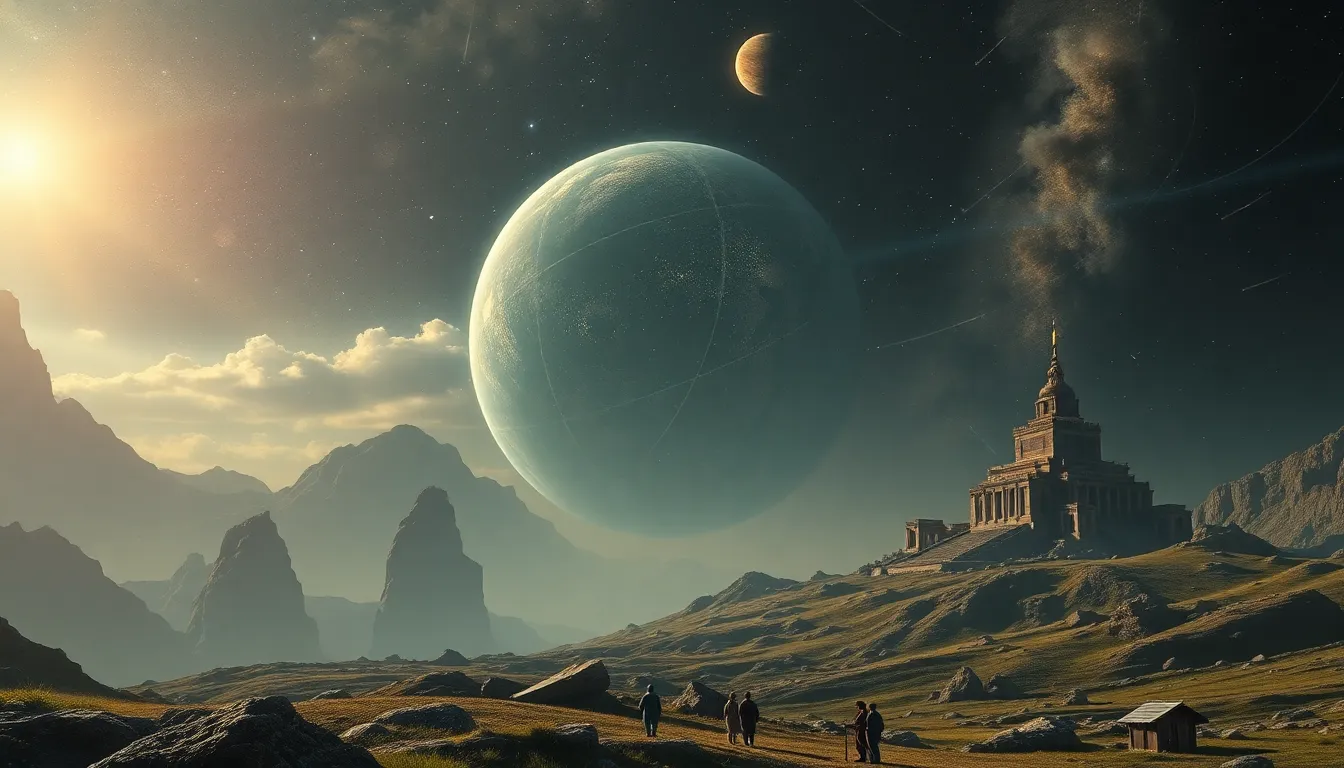The Mythical Sphere: Sacred Places in the Cosmos
Introduction: The Cosmic Canvas
The concept of sacred places transcends geographical boundaries, appearing in various cultures throughout history. These sites, often steeped in spiritual significance, are seen as gateways to the divine, reflective of humanity’s quest for meaning. The cosmos, with its vast expanse and celestial wonders, can be viewed as a mythical sphere, inviting exploration and contemplation.
This article aims to delve into the sacred sites beyond Earth, exploring how they resonate with our understanding of the universe and our place within it. By examining the intersection of myth, astronomy, and spirituality, we will uncover the connections that bind us to the cosmos.
The Intersection of Myth and Astronomy
Throughout history, celestial bodies have captivated human imagination, intertwining with mythology and spirituality. Ancient civilizations often perceived stars, planets, and constellations as sacred entities, each telling a story of creation, divinity, and human experience.
For instance:
- In ancient Egypt, the stars were seen as representations of gods and were integral to their religious practices.
- The Greeks associated planets with their deities, such as Ares (Mars) and Aphrodite (Venus), reflecting their attributes and influence on human affairs.
These celestial connections played a crucial role in various religious practices, guiding rituals and societal norms. The night sky served as a cosmic canvas, illustrating the relationship between humanity and the divine.
Sacred Sites on Earth: A Cosmic Connection
Earth is home to numerous sacred sites, many of which are aligned with celestial events. Structures like Stonehenge and Machu Picchu are not merely architectural feats; they embody a profound understanding of the cosmos.
For instance:
- Stonehenge: This prehistoric monument aligns with the solstices, reflecting ancient peoples’ reverence for the cycles of nature and their connection to the heavens.
- Machu Picchu: The Inca citadel was built with astronomical knowledge, aligning its structures with key solar events, demonstrating the importance of celestial rhythms in Incan spirituality.
These Earth-based sacred places provide insights into how ancient cultures understood the cosmos, emphasizing the interconnectedness between the terrestrial and the celestial.
The Planets: Celestial Temples
Each planet in our solar system carries its own mythological significance, often linked to deities and cultural narratives. For example:
- Venus: Associated with the goddess of love and beauty, Venus symbolizes harmony and attraction.
- Mars: Known as the god of war, Mars embodies strength, aggression, and the warrior spirit.
Moreover, moons and asteroids also hold sacred significance in various cultures. For instance, the moons of Jupiter were named after lovers of Zeus, embodying stories of passion and betrayal.
The Stars: Portals to the Divine
Constellations have played a pivotal role in human culture, often serving as a bridge between the earthly and the divine. Different cultures have attributed various meanings to the same stars, creating rich tapestries of mythology.
For example:
- The Big Dipper, known as the “Great Bear” in some cultures, is seen as a symbol of guidance and navigation.
- The Southern Cross holds significant spiritual meaning for many Indigenous Australians, often used for navigation and storytelling.
In ancient societies, stargazing was not only a scientific endeavor but also a spiritual practice, connecting individuals to the cosmos through rituals and ceremonies.
Beyond Our Solar System: Exoplanets and Mythology
As science advances, the discovery of exoplanets has opened new avenues for speculation about sacredness beyond our solar system. These distant worlds challenge our understanding of life and spirituality.
Speculative questions arise:
- Could these exoplanets harbor life forms with their own spiritual beliefs?
- How might contemporary cultures perceive the concept of sacredness in relation to these distant worlds?
The exploration of exoplanets encourages us to expand our notions of sacred places, inviting new interpretations and narratives surrounding the cosmos.
The Cosmic Web: Sacred Geometry of the Universe
Sacred geometry reflects the mathematical patterns found in nature and the cosmos, suggesting an underlying order to the universe. From the Fibonacci sequence to the golden ratio, these patterns manifest in various forms, including architecture and art.
Examples of sacred geometry in ancient architecture include:
- The pyramids of Giza, reflecting cosmic alignments and mathematical precision.
- The Parthenon in Athens, embodying the principles of symmetry and harmony.
These geometric principles not only illustrate the beauty of the cosmos but also highlight the interconnectedness of all creation.
The Role of Technology in Exploring Sacred Cosmos
Modern astronomy and technological advancements have revolutionized our understanding of the cosmos, revealing new sacred places and deepening our spiritual connection to the universe.
Key advancements include:
- Space telescopes, such as Hubble, allowing us to explore distant galaxies and celestial phenomena.
- Space travel, which offers a unique perspective on Earth and the cosmos, inspiring a sense of unity and wonder.
Additionally, virtual reality and simulations enable immersive experiences of the cosmos, allowing individuals to explore celestial wonders in ways that were previously unimaginable.
Cultural Perspectives: The Universe as a Spiritual Text
Different cultures interpret the cosmos as a sacred narrative, shaping our understanding of existence and spirituality. Indigenous perspectives often view the universe as a living entity, rich with stories and lessons.
Art and literature play vital roles in conveying these cultural narratives, reflecting humanity’s enduring fascination with the cosmos. Through storytelling, we connect with the mysteries of the universe, seeking to comprehend our place within it.
Conclusion: Embracing the Sacred in the Cosmos
As we explore the mythical sphere of sacred places in the cosmos, we uncover the profound connections between humanity and the universe. From ancient sites on Earth to distant exoplanets, the quest for understanding sacredness continues to inspire and challenge us. Recognizing the cosmos as a sacred canvas invites us to embrace our role as stewards of the universe, fostering a deeper appreciation for the interconnectedness of all existence.



